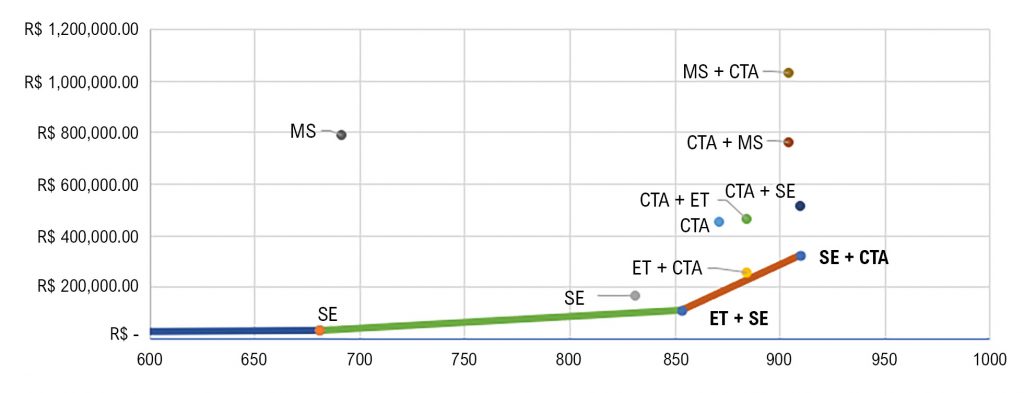Arq. Bras. Cardiol. 2022; 118(3): 578-585
Cost-Effectiveness Analysis of CCTA in SUS, as Compared to Other Non-Invasive Imaging Modalities in Suspected Obstructive CAD
This Original Article is referred by the Short Editorial "It is Time for Coronary Computed Tomography Angiography to be Incorporated into the SUS".
Abstract
Background
The Brazilian public health system does not include computed tomography angiography (CTA).
Objective
Rank, according to the Brazilian public health system, the cost-effectiveness of different strategies for the diagnosis of coronary artery disease (CAD), combining exercise tests (ET), myocardial scintigraphy (MS), stress echocardiography (SE), and CTA in a hypothetical intermediate pre-test probability cohort of patients.
Methods
This study implemented a cost-effectiveness analysis through a decision tree. The incremental cost-effectiveness ratio (ICER) and net benefit were analyzed by adopting multiple thresholds of willingness to pay, from 0.05 to 1 GDP per capita per correct diagnosis. In sequential tests, a second confirmatory test was performed only when the first was positive.
Results
After excluding dominated or extended dominance diagnostic strategies, the efficiency frontier consisted of three strategies: ET, ET followed by SE, and SE followed by CTA, the last being the most cost-effective strategy. Through the net benefit, the ranking of the most cost-effective strategies varied according to willingness to pay.
Conclusions
Using current concepts of health technology assessment, this study provides a ranking for decision-making concerning which diagnostic strategy to use in a population with an intermediate pre-test risk for CAD. With a feasible cost estimate adopted for CTA, the impact of including this to the list of the diagnostic arsenal would represent a cost-effective strategy in most of the evaluated scenarios with broad variations in the willingness to pay.
1,148

